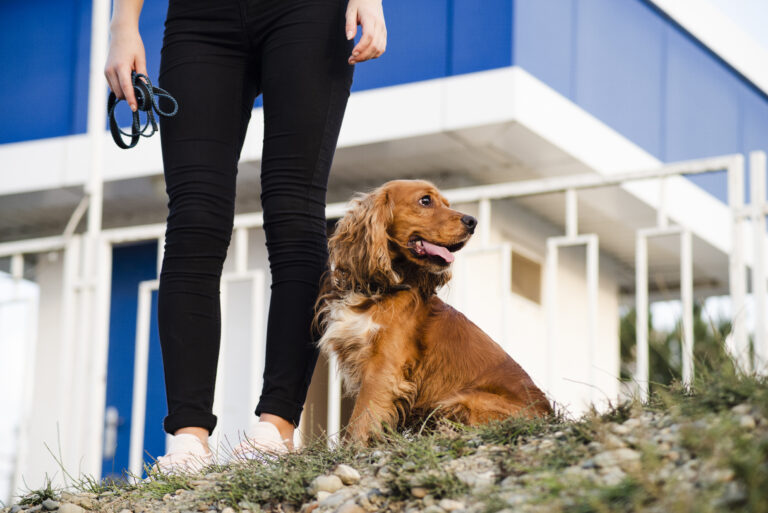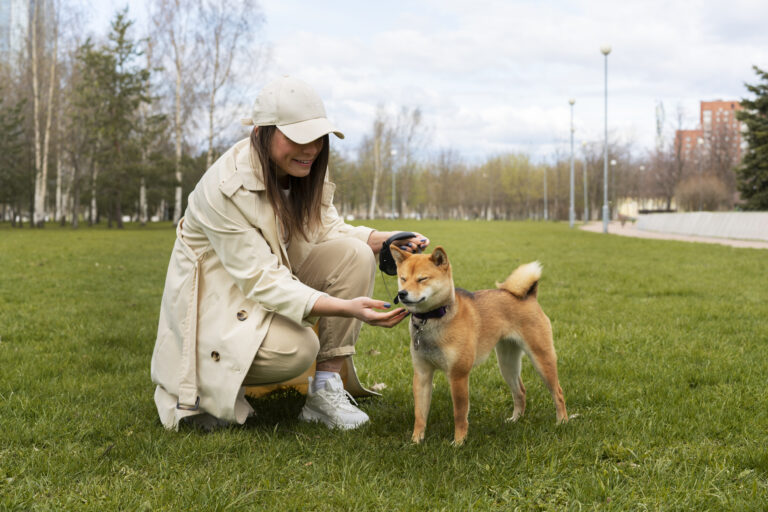Can Dogs Get Depressed? Health Signs You Shouldn’t Ignore
Dog depression signs can be easy to miss, especially when symptoms mimic common behavioral changes. But just like humans, dogs can experience sadness, lethargy, and even emotional distress due to grief, boredom, illness, or life changes. If your pup seems less interested in play, food, or family interaction, it might be more than just a bad day. In this post, we’ll explore the signs of canine depression, possible causes, and how you can support your dog back to emotional health.
A staggering 40% of dog owners have reported noticing signs of depression in their pets at some point. Historical evidence suggests that dogs who have lost a fellow pet or a beloved human companion are particularly susceptible. It’s essential to look for health indicators such as changes in appetite, lethargy, and withdrawal from social activities, as these could be manifestations of a deeper, underlying issue.
Can Dogs Get Depressed? Health Signs You Shouldn’t Ignore
Believe it or not, dogs can suffer from depression just like humans. This emotional state in pets is often triggered by major changes in their environment. For example, moving to a new home or losing a family member can have a significant impact. Dogs may exhibit signs of sadness through altered behavior and reduced interest in activities they used to enjoy. Recognizing these signs early is vital for their mental health.
There are several health signs that pet owners should watch for. A depressed dog might exhibit changes in their appetite, either eating very little or overeating. Sleep patterns may also change, with some dogs sleeping more than usual. Others might become lethargic and show less enthusiasm for play. These behaviors can indicate your furry friend is struggling emotionally.
Behavioral changes are another indicator of depression in dogs. A once sociable dog may start avoiding interactions with family members. Additionally, increased vocalizations like whining or howling can signal distress. It’s crucial to notice these shifts in behavior and consider if they are linked to emotional challenges. Prompt attention can help address the issue before it worsens.
Understanding the root causes of depression in dogs is a step toward helping them recover. Major life changes, such as a new pet in the house, can contribute to their sadness. Ensuring they have a stable environment and plenty of affection can alleviate some of their stress. If symptoms persist, consulting a veterinarian is recommended. They can offer guidance on treatment options, which may include behavioral therapy or medication.
Recognizing Behavioral Changes
Identifying depression in dogs involves observing changes in their daily behavior. You might notice your dog no longer wags its tail enthusiastically when you come home. They may also show less interest in activities they once loved, such as playing fetch or going for walks. Increased aggression or irritability can also be signs of emotional distress. Paying attention to these changes can help you intervene early.
Another behavioral shift to watch for is if your dog isolates itself. Dogs are naturally social animals, so a sudden preference for being alone is concerning. Watch for signs like hiding or avoiding contact with family members. Social withdrawal can be a strong indicator that your dog is experiencing depression. Take note if your dog consistently chooses isolation over interaction.
Excessive grooming or licking can be another warning sign. Dogs may engage in repetitive behaviors as a way to cope with emotional pain. This over-grooming can sometimes lead to physical issues like sores or hair loss. If you notice this behavior, it’s essential to address it promptly. Consulting a veterinarian can provide insights into whether this is a sign of depression or another health issue.
Lastly, increased vocalizations such as whining, howling, or barking can indicate your dog is unhappy. These sounds are their way of expressing discomfort or distress. Keep an eye on the context in which these vocalizations occur. If they’re happening more frequently, it may be a cry for help. Observing these vocal changes is important for understanding your dog’s emotional state.
Identifying Physical Symptoms
Physical signs of depression in dogs are often the first noticeable indicators. A change in appetite is a common symptom. Your dog might lose interest in food or, conversely, start eating excessively. Weight loss or gain can follow these changes in eating habits. Monitoring their food intake is crucial for detecting early signs of depression.
Another physical symptom to watch for is altered sleep patterns. Depressed dogs may sleep more than usual or have trouble sleeping. Restlessness at night can also be a signal that something is wrong. It’s essential to observe any significant changes in their sleep routine. Maintaining a regular sleep schedule is important for their overall health.
Lethargy is a critical symptom, indicating that your dog might be feeling down. A normally energetic dog may become unusually passive. They might resist engaging in physical activities or exercise. This shift in energy levels can be worrying. If your dog appears uninterested in moving around, it might be time to evaluate their mental state.
Grooming habits can also indicate physical symptoms associated with depression. Some dogs may neglect their grooming, leading to a dull coat. Conversely, excessive licking or chewing can be a coping mechanism for emotional stress. This behavior can cause skin irritations or infections. Keeping an eye on these habits will help you identify if your dog needs extra care.
Environmental and Social Triggers
Environmental changes can have a big impact on a dog’s emotional well-being. Moving to a new home or changes in the family structure, like a divorce, can trigger stress. Even rearranging furniture may unsettle some dogs. These changes can disrupt their sense of security and cause anxiety. It’s important to manage these transitions carefully to minimize stress.
New additions to the family, such as another pet or a baby, can also affect a dog’s mental state. Dogs can become jealous or feel neglected. They might need extra attention during these times to feel secure. Maintaining their routine can help ease their anxiety. Providing a safe space where they can retreat is also beneficial.
Loss of a companion, whether human or animal, can deeply affect a dog. The absence of a loved one can lead to depression. They might search for the lost companion or become withdrawn. It’s essential to offer extra love and patience during these difficult periods. Keeping the dog’s routine consistent can also provide comfort.
Lack of social interaction is another critical trigger for depression in dogs. Dogs are social animals and need regular interaction with their family and other dogs. Isolation can lead to feelings of loneliness and sadness. Ensuring your dog has ample playtime and social opportunities is crucial. Activities can include dog park visits or playdates with other dogs.
Environmental enrichment plays a role in preventing boredom and depression. Toys, puzzles, and interactive games can keep your dog engaged and mentally stimulated. Without these, dogs can become bored and anxious. Rotate their toys regularly to keep their interest high. Ensuring mental stimulation is as important as physical exercise.
Inconsistent routines can also be a stressor for dogs. They thrive on consistency and knowing what to expect. Changes in feeding, walking, or bedtime schedules can create anxiety. Keeping a predictable routine helps provide stability. It’s one of the best ways to ensure your dog feels safe and secure.
Addressing Depression in Dogs
Addressing depression in dogs requires a compassionate and proactive approach. First, it is essential to observe and confirm the symptoms. Once identified, maintaining a consistent routine can help provide a sense of security. Keeping mealtimes, walks, and playtimes regular is crucial. This structure offers stability and reassurance.
Increasing social interactions can also be beneficial. Spending quality time with your dog can improve their mood immensely. Engage in activities that they enjoy, such as playing fetch or going to the park. Inviting fellow pet owners for playdates can also help. Socializing with other dogs allows for healthy interaction.
Environmental enrichment can reduce symptoms of depression. Providing toys, puzzles, and activities keeps your dog mentally stimulated. Rotate toys every few days to keep them novel. Introducing new scents or sounds can also be engaging for them. This stimulation prevents boredom and keeps their mind active.
Consider using natural remedies like pheromone diffusers, which can help to calm anxious dogs. These products release scents that mimic the comforting scent of a mother dog. Always consult your vet before starting any new treatments. They may also suggest dietary changes or supplements. Proper nutrition plays a key role in overall well-being.
Behavioral therapy is another option for dogs showing severe signs of depression. Consulting a professional animal behaviorist can provide structured support. They can help customize a plan tailored to your dog’s needs. This may include behavior modification exercises. Professional guidance ensures that you’re taking the correct steps to help your dog.
Addressing any underlying health issues is critical. Sometimes, health problems can manifest as depression. A thorough examination by a veterinarian can rule out other conditions. Regular check-ups are essential for maintaining your dog’s health. Early detection of any issues is always beneficial.
When to Consult a Veterinarian
Recognizing when to consult a veterinarian is crucial for your dog’s health. If your dog shows persistent changes in behavior that last more than two weeks, it’s time to seek professional help. These changes can include prolonged lethargy, lack of appetite, or withdrawal from social interactions. Behavioral shifts that don’t improve with your efforts may need medical intervention. Early consultation ensures prompt treatment and better outcomes.
Physical symptoms accompanying behavioral changes should also prompt a vet visit. If your dog is losing weight rapidly or has unexplained sores, these are red flags. Continuous vomiting or diarrhea can indicate a serious issue. Persistent coughing or trouble breathing are also signs that shouldn’t be ignored. Your veterinarian can conduct tests to rule out underlying health conditions.
Sudden aggression or extreme fearfulness can be indicators of a medical problem. These behaviors might stem from pain or discomfort that your dog can’t communicate. A comprehensive check-up can identify the root cause. Whether it’s a dental issue, arthritis, or something more serious, a vet can provide the right treatment. Addressing pain can often alleviate those negative behaviors.
Dogs that have experienced traumatic events, like accidents or the loss of a companion, may need professional help. A vet can recommend therapeutic options. These can include anti-anxiety medications or referrals to behaviorists. Professional guidance can make a significant difference in recovery. Trauma needs careful handling to ensure your dog doesn’t suffer long-term effects.
Finally, if you’ve exhausted all home remedies and your dog’s condition hasn’t improved, consult a vet. Sometimes, expert intervention is necessary to diagnose and treat the issue correctly. Your veterinarian has the expertise and tools to help your dog heal. Don’t hesitate to reach out for professional support. Your dog’s well-being is worth the effort.
Frequently Asked Questions
Understanding canine depression is crucial for ensuring the well-being of our pets. Below are some commonly asked questions to help guide you.
1. What causes depression in dogs?
Depression in dogs can be triggered by several factors. One common cause is a significant change in their environment, such as moving to a new home. Loss of a loved companion, either human or animal, can also lead to depression. It’s important to identify these causes to manage their emotional health effectively.
Other triggers include lack of social interaction and insufficient mental stimulation. Dogs need regular engagement to stay happy. Major life changes, including new additions to the family, can also impact their mood. Observing your dog’s behavior during these times can provide vital clues to their emotional state.
2. How can I tell if my dog is depressed?
Identifying depression in dogs involves noticing behavioral changes. Common signs include loss of interest in activities they normally enjoy, like playing or going for walks. You might also notice changes in their appetite and sleep patterns. They may sleep more or less and show less excitement about food.
Physical symptoms like excessive grooming, lethargy, and social withdrawal are also key indicators. If your dog starts avoiding interactions or appears unusually tired, these could be signs of depression. Prompt attention to these changes can help manage their condition effectively.
3. How can I help my dog overcome depression?
Helping a depressed dog involves maintaining a consistent routine and providing mental stimulation. Regular playtimes, walks, and feeding schedules can create a sense of normalcy. Introducing new toys or puzzles can keep their mind engaged and reduce boredom. Socializing with other dogs and spending quality time together can also uplift their mood.
Additionally, consulting a veterinarian for professional advice is essential. They may suggest behavioral therapy or medications. Understanding and addressing the root causes of depression can significantly improve your dog’s emotional well-being. Extra love and patience during this time are crucial.
4. Are certain breeds more prone to depression?
While all dogs can experience depression, some breeds may be more prone due to their nature. Breeds known for high sensitivity, like Border Collies or German Shepherds, often exhibit emotional distress more easily. Dogs with strong bonds to their owners, such as Greyhounds, can feel deep sadness when separated from loved ones.
It’s important to understand your breed’s specific needs and behaviors. Regular engagement and a stable environment can help mitigate these risks. Ensuring they get plenty of exercise, social interaction, and mental stimulation is vital for their emotional health.
5. What should I do if my dog’s depression doesn’t improve?
If your dog’s depression persists despite your efforts, consulting a veterinarian becomes necessary. Chronic depression can indicate underlying health issues that need professional assessment. A vet will perform a thorough examination to rule out any medical conditions. They may suggest a treatment plan that includes therapy or medication.
It’s crucial not to ignore prolonged symptoms of depression. Early intervention can prevent complications and ensure your dog’s recovery. Continuous support and dedicated care are essential in helping them overcome this emotional challenge.
Conclusion
Addressing canine depression is vital for the overall well-being of your pet. Early recognition of symptoms allows for timely intervention, ensuring your dog remains happy and healthy. By maintaining routine, providing social interaction, and consulting professionals when necessary, you can effectively manage their emotional health.
Understanding the triggers and signs of depression empowers you to take proactive measures. Every dog is unique, and their needs should be met with love and care. Your dedication to their mental wellness is a cornerstone to their vibrant, joyful life.







